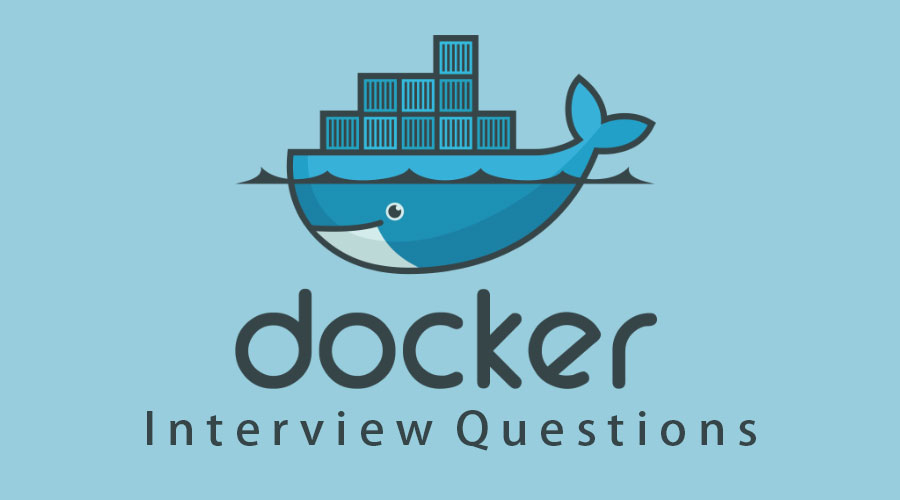Essential Docker Interview Questions Every DevOps Engineer Should Know
 Nitin Dhiman
Nitin Dhiman
Introduction
Docker has become a cornerstone of modern DevOps practices, and it’s no surprise that it’s a hot topic in DevOps interviews, especially for freshers. Whether you're new to the field or looking to brush up on your Docker knowledge, having a solid grasp of key Docker concepts and commands can make a big difference in your interview performance.
Here’s a collection of important Docker interview questions that every aspiring DevOps Engineer should know.
1. What is the Difference between an Image, Container, and Engine?
Docker Image: A read-only template with instructions for creating a Docker container.
Docker Container: A runnable instance of a Docker image, which holds the environment and all the dependencies required to run the application.
Docker Engine: The core component of Docker, responsible for creating and managing containers.
2. What is the Difference between the Docker command COPY vs ADD?
COPY: This command simply copies files or directories from the host machine into the Docker image.
ADD: More powerful, as it can also fetch files from remote URLs and unpack local .tar files automatically.
3. What is the Difference between the Docker command CMD vs RUN?
CMD: Specifies the default command to run when a container is launched.
RUN: Executes commands in a new layer on top of the current image and commits the results.
4. How Will You Reduce the Size of the Docker Image?
Use multi-stage builds.
Minimize the number of layers in Dockerfile.
Clean up unnecessary files and caches.
5. Why and When to Use Docker?
Docker is used to standardize environments, isolate applications, and streamline the deployment process. It’s particularly useful in microservices architectures, CI/CD pipelines, and environments where applications need to be portable across different platforms.
6. Explain the Docker Components and How They Interact with Each Other.
Docker Client: Interface for users to interact with Docker.
Docker Daemon: Runs on the host machine and manages Docker containers.
Docker Image: Templates used to create containers.
Docker Hub: Repository to find and share container images.
7. Explain the Terminology: Docker Compose, Docker File, Docker Image, Docker Container.
Docker Compose: Tool for defining and running multi-container Docker applications.
Dockerfile: Script containing a series of instructions to build a Docker image.
Docker Image: Read-only template used to create containers.
Docker Container: A lightweight, standalone, and executable package that includes everything needed to run a piece of software.
8. In What Real Scenarios Have You Used Docker?
Personalize this answer based on your own experience, such as containerizing applications, setting up development environments, or running CI/CD pipelines.
9. Docker vs Hypervisor?
Docker: Containerization technology that uses OS-level virtualization to run multiple containers on a single OS.
Hypervisor: Virtualization technology that creates and runs virtual machines, each with its own OS.
10. What are the Advantages and Disadvantages of Using Docker?
Advantages:
Portability
Scalability
Resource efficiency
Disadvantages:
Not suitable for all applications
Limited by the host OS
11. What is a Docker Namespace?
Namespaces are a Linux kernel feature that isolates and manages resources, such as processes, networks, and filesystems, in Docker containers.
12. What is a Docker Registry?
A Docker registry is a repository for storing and distributing Docker images, such as Docker Hub.
13. What is an Entry Point?
The ENTRYPOINT instruction specifies a command that will always run when the container starts.
14. How to Implement CI/CD in Docker?
Use Docker to containerize the application and Jenkins or GitLab CI to automate the build, test, and deployment processes.
15. Will Data on the Container Be Lost When the Docker Container Exits?
Yes, unless the data is stored in Docker volumes or bind mounts that persist beyond the container’s lifecycle.
16. What is a Docker Swarm?
A Docker Swarm is a group of Docker hosts that work together to provide high availability and scaling.
17. What are the Docker Commands for the Following:
View running containers:
docker psCommand to run the container under a specific name:
docker run --name <container_name> <image_name>Command to export a Docker image:
docker save -o <file_name>.tar <image_name>Command to import an already existing Docker image:
docker load -i <file_name>.tarCommands to delete a container:
docker rm <container_name>Command to remove all stopped containers, unused networks, build caches, and dangling images:
docker system prune
18. What are the Common Docker Practices to Reduce the Size of Docker Image?
Use smaller base images.
Keep the Dockerfile clean and simple.
Remove unnecessary dependencies and files.
These questions cover some of the most crucial aspects of Docker that are frequently asked in DevOps interviews. Preparing these questions will not only help you in interviews but also deepen your practical knowledge of Docker.
Remember, continuous learning and practice are key to mastering Docker and acing your DevOps interviews. Keep exploring, keep building, and stay curious!
Subscribe to my newsletter
Read articles from Nitin Dhiman directly inside your inbox. Subscribe to the newsletter, and don't miss out.
Written by
